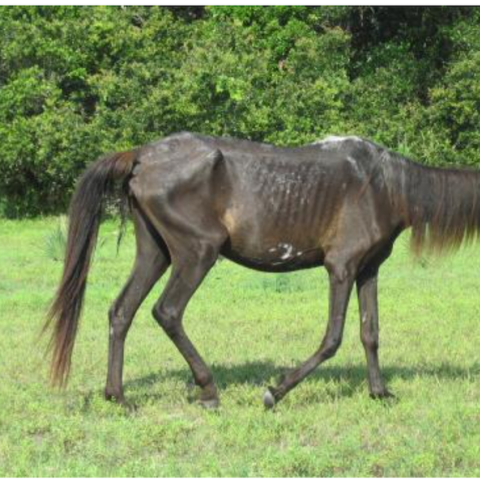The National Park Service at Cumberland Island National Seashore in Georgia wants to move forward with four land exchanges to move private property outside of the national seashore.
"The proposed action is to acquire a relatively contiguous corridor of privately owned land within core areas of the seashore to improve manageability of these areas, preserve important resources, and prevent further development on these inholdings," a brochure outlining the proposal said. "By exchanging property with these landowners, the NPS would seek to relocate private interests to other areas where it is more appropriate and less impactful on visitors."
As proposed, the national seashore would add nearly 400 acres to the seashore. How much land the Park Service would relinquish in exchange remains to be determined.
"For each potential land acquisition, an NPS-owned property of equal monetary value would be conveyed to private ownership through an exchange agreement," the brochure explained. "Generally, these agreements would include a conservation easement to protect important resource values on these exchanged private lands. However, the exact acreages, locations, and terms of the conservation easements are part of a negotiation with the private landowners through the land exchange agreement process."
Here's a look at the four tracts being eyed:
Exhange 1
The national seashore would acquire approximately 10 acres of unimproved forest located on the marsh side of the island adjacent to the Old River Trail, which is a route for hikers to and from Plum Orchard and an alternative to the main road. The property is also currently designated as potential wilderness and would convert to designated wilderness after NPS acquisition.
The property owner would receive an unspecified number of acres that offers existing access to water, an existing dock, utility lines, and access roads. Archaeological surveys have been conducted on most of this NPS-owned property. A conservation easement would identify areas of concern for cultural and natural resources to limit development to areas outside of sensitive locations. This property is not in an area with high visitor use.
Exchange 2
The national seashore would acquire approximately 132 acres of upland forest, salt marsh, and ocean frontage east and west of the main road, which supports important habitat for shorebirds and federally threatened sea turtles. The property also has potential for interpretation and educational outreach in support of the mission of the Seashore. Acquisition of this property would maintain a green corridor east of the main road to the beach that would guarantee continuity of the Parallel Trail, the primary north–south artery for hikers.
The property owner would acquire an unspecified number of acres with existing access to water, an existing dock, utility lines, and access roads. Archaeological surveys have been conducted on most of this NPS-owned property involved in this exchange. A conservation easement would identify areas of concern for cultural and natural resources to limit development to areas outside of sensitive locations. This property is not in an area with high visitor use
Exchange 3
The national seashore would acquire approximately 136 acres of upland forest, salt marsh, and ocean frontage east of the main road within the Greyfield Historic District. The property contributes to a greenway and habitat corridor that extends the entire length of the island’s east side, which supports important habitat for shorebirds and federally threatened sea turtles. Acquisition of this property would maintain a green corridor east of the main road to the beach that would also maintain continuity of the Parallel Trail.
The property owner would obtain land on the marsh side of the island. Several structures of varying condition are located on the property, collectively referred to as Davisville. Archaeological surveys have been conducted on most of this NPS-owned property involved in this exchange. A conservation easement would identify areas of concern for cultural and natural resources to limit development to areas outside of sensitive locations. These tracts are not in an area with high visitor use.
Exchange 4
The national seashore would acquire approximately 95 acres of unimproved forest land located along the Georgia coast, with approximately 85 acres located east of the main road and 10 acres located west of the main road. This property is adjacent to the seashore’s main ranger station/visitor center on the island and is 100 yards north of the Sea Camp, the largest and busiest campground. Additionally, the Seashore’s main north–south hiking trail, the Parallel Trail, crosses the property. This acquisition would protect the Sea Camp campground from potential adverse impacts from nearby construction and guarantee continuity of the Parallel Trail, which intersects this property.
The property owner would acquire land near the far north end of the seashore within the High Point–Half Moon Bluff Historic District. Archaeological and historic structure surveys and analyses are currently underway. A conservation easement would identify areas of concern for cultural and natural resources in order to limit development in those areas.
The Park Service has scheduled a virtual public meeting to discuss the proposed exchanges for September 19 from 6 p.m. to 7:30 p.m. local time. To attend the virtual meeting, use this link below and plan to join the meeting 5 to 10 minutes early to test your connection.
By telephone, you can call in on listen-only mode by dialing (309) 205-3325 and using 759293# as the webinar ID.
Public comment is being taken through October 6.
You can find the brochure, which contains maps identifying the general location of the parcels proposed for exchange, and leave comments on the proposals, at this site.


 Support Essential Coverage of Essential Places
Support Essential Coverage of Essential Places






